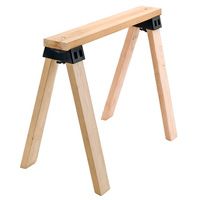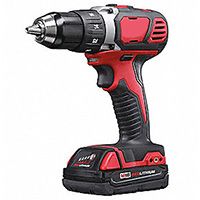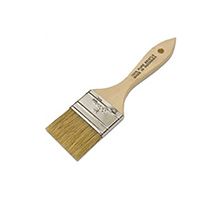Painting an exterior metal door is a relatively simple do-it-yourself (DIY) project that can transform a tired entryway into a welcoming focal point. With the right preparation and materials, you can achieve a professional-looking finish that will last for years. In the video above, This Old House painting expert Mauro Henrique demonstrates the proper techniques for painting an exterior metal door.
Recommended Tools To Paint an Exterior Metal Door
Supplies for this project, including foam rollers and a synthetic angled sash brush, are sold at home centers and paint supply stores.
Preparing Your Metal Door for Painting
Before you begin painting, take time to set up properly to save time and frustration.
Removing the Door and Hardware
- Using a hammer, remove the door from its hinge pins. This will make it easier to work on and allow you to paint the entire surface evenly.
- Place the door on sawhorses. This stable platform will help you maintain a steady hand while working.
- Remove all hardware from the door, including doorknobs, locks, and weatherstripping. This makes for a neater paint job.
- Store the hardware in a safe place. Keeping everything organized will save you time when reassembling the door.
Cleaning and Sanding the Door
To prepare your metal door, lightly sand the entire door surface with 400-grit sandpaper to create a slightly rough texture. This makes the surface more receptive to the paint. As Henrique demonstrates, gentle sanding is important to avoid scratching the surface while still creating enough texture for the paint to adhere properly.
A clean surface is essential for paint adhesion. Use a vacuum with a dust attachment to remove all sanding debris. Ensure no particles are left behind that could compromise the finish. Wipe down the door with a damp rag to remove any remaining dust or dirt.
Addressing Repairs
Inspect the door for any dents, scratches, or signs of rust. Repair these imperfections to ensure a flawless finish. For small dents and scratches, use a metal filler to smooth the surface. To remove rust, use a wire brush or sandpaper, then apply a rust-inhibiting primer. Ensure that all filled or primed areas are sanded smoothly before applying paint.
Choosing the Right Paint
Not all paints work on a metal door. You’ll need to use a paint specifically designed to adhere to metal surfaces. Direct-to-metal (DTM) paint is the best choice for this project. It offers the following advantages:
- Color and finish variety
- Excellent durability against weather and wear
- Rust- and corrosion-resistance
- Superior adhesion
Henrique recommends using Benjamin Moore’s DTM paint for its quality and durability. Other brands, such as Behr Premium, also offer good options for metal doors.
Choosing the Right Color
When selecting a color for your exterior door, consider the following factors:
- Your home’s overall color scheme
- The style of your house
- Neighborhood guidelines or HOA restrictions
Even within a single color, variations in undertones can affect the final look. Paint a swatch on the door and observe it throughout the day to make sure the color complements your home in all lighting.
Primer for Metal Surfaces
Though DTM paint often includes primer, applying an additional primer coat is a good idea for surfaces with rust or other issues. Look for a primer compatible with DTM paint. Henrique recommends a high-adhesion bonding primer such as Kilz Adhesion. Apply the primer evenly, following the manufacturer’s instructions for drying times before adding the paint.
Painting Techniques for a Professional Finish
Pour the DTM paint into a sturdy paint tray for convenient access. Use a 2-inch angled sash brush to cut in around the door panels and any trim details. Start with areas that require precision. Apply paint to recessed areas and edges, taking care not to overload the brush to avoid drips.
Switch to a microfiber paint roller for the larger, flat areas of the door. This helps to cover expanses quickly and evenly. Use long, even strokes with light pressure to minimize roller marks. Light pressure will also prevent excess paint buildup. Work in sections, maintaining a wet edge to prevent lap marks. This technique ensures a seamless finish.
Drying and Curing
Follow the paint manufacturer’s recommendations for drying times. Environmental factors such as humidity and temperature can influence these times. Avoid rushing—waiting for each coat to dry will help the paint job last longer.
Applying Multiple Coats
Apply multiple coats of paint will give your door a professional appearance and increase its durability against weather and wear.
First Coat Application
Apply the first coat evenly across the entire door surface. Use consistent strokes to ensure an even application. Allow the paint to dry completely. This typically takes one to two hours, depending on temperature and humidity. Refer to the paint manufacturer’s instructions for specific drying times.
Second Coat and Touch-Ups
Once the first coat is dry, apply a second coat using the same techniques. Pay attention to any areas that may need touch-ups or additional coverage. Allow the second coat to dry completely before handling the door. Drying times may vary based on climate conditions.
Final Inspection
Before reassembling the door, do a final inspection. Check for any uneven spots or areas that need additional touch-ups. Make sure the paint is completely dry and has cured to avoid damage when rehanging the door.
Reassembling and Hanging the Door
After the paint has fully dried, it’s time to put everything back together. Securely fasten all hardware to the door, including doorknobs, locks, and weatherstripping.
Carefully rehang the door on its hinges. This step is easier with a second person to help align the door properly.
Test the door to ensure it opens and closes smoothly. Make any necessary adjustments to the hardware or frame. Make sure the doorframe and surrounding areas are clean and free from paint splatters.
Adding Finishing Touches
After reassembling the door, you may want to install a new door knocker or house numbers to complement the refreshed look. You can also add a decorative wreath or seasonal decorations. These final touches can enhance the overall appearance and give your entryway a cohesive, polished look.
Maintaining Your Metal Door
To keep your newly painted metal door looking its best, clean the door regularly with a mild soap and water solution. Avoid using harsh chemicals that could damage the paint. Touch up any chips or scratches promptly to prevent rust.
Consider repainting every three to five years, especially for darker colors that tend to fade faster when exposed to the elements.
Seasonal Care
Seasonal changes can affect your door’s appearance and longevity. Consider these tips:
- Winter: Inspect the door for signs of wear and touch up paint if needed to protect against harsh weather.
- Spring: Clean the door to remove accumulated grime and pollen.
- Summer: Check for fading or damage from prolonged sun exposure and plan for any necessary touch-ups.
- Fall: Clean and inspect the door before winter to ensure it is in good condition.





